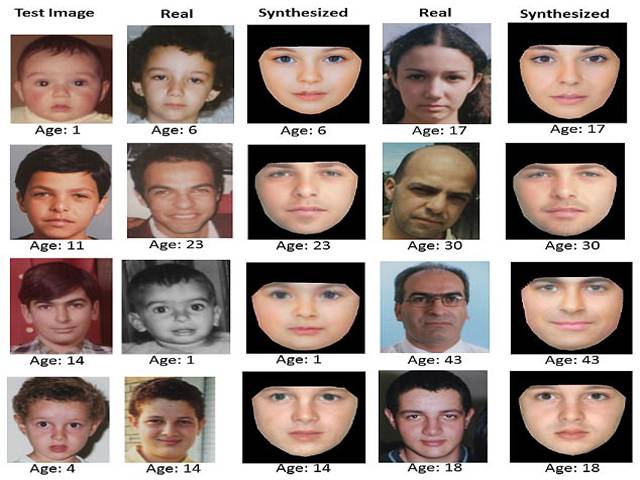Bradford-Each year, over a million missing persons cases are reported in the US and UK, leaving families desperately searching for their loved ones.
In the hope of boosting this search, researchers have developed a new and more accurate method of ageing facial images.
They have tested their new software on an image of Ben Needham, who went missing when he was a toddler in 1991 on the Greek island of Kos.
The resulting images are vastly different to the computer generated images of Ben as an adult produced by current face-ageing current software.
This, they say, suggests that existing technology isn’t up to the task. They hope their software can spark some new breakthroughs in existing missing persons cases.
They say they could use it to create more accurate images of what Madeleine McCann, who went missing 10 years ago in Portugal, will look like today.
The system was created by researchers at the University of Bradford.
Professor Hassan Ugail, who led the research, told MailOnline: ‘We see our software being used to find missing children by relevant agencies and authorities, including police forces around the world.’
The system maps out key features, such as the shape of the cheek, mouth and forehead, of a face at a certain age.
This information is fed to a computer algorithm which then creates new features for the face to produce photographic quality images of the face at different ages.
A key feature of the method is that it teaches the machine how humans age, by feeding the algorithm facial feature data from a large database of individuals at various ages.
This makes it more accurate than previous methods of facial ageing.
Professor Ugail told MailOnline: ‘Our method generates more individualized results and hence is more accurate for a given face. Professor Ugail added: ‘Each year around 300,000 missing person cases are recorded in the UK alone.
‘This has been part of our motivation in endeavouring to improve current techniques of searching for missing people, particularly those who have been missing for some considerable time.’ To test the system, the researchers use a method called de-aging, in which they take a person’s picture and run the algorithm backwards, in a Benjamin Button-like way. The result is then compared with an actual photograph of the individual taken at the young age.
As a test case, the researchers worked on the case of Ben Needham, who disappeared on the Greek island of Kos on 24th July 1991, when he was only 21 months old.
While Ben has never been found, several images have been produced by investigators showing how Ben might look like at ages 11-14 years, 17-20 years, and 20-22 years.
The team used their method to progress the image of Ben to the ages of six, 14 and 22 years.
The resulting images show very different results, which the researchers believe more closely resemble what Ben might look like today.
The results were evaluated using both machine and human methods, and in both, the images of Ben produced using this method were found to be more like the original picture of Ben than the images created as part of previous investigations.
Professor Ugail added: ‘No criticism is implied of existing age progression work.
‘Instead we are presenting our work as a development and improvement that could make a contribution to this important area of police work.
‘We are currently working with the relevant parties to further test our method. We are also developing further research plans in order to develop this method so it can be incorporated as a biometric feature, in face recognition systems, for example.’
The team now hopes to trial the system on more faces of missing people, and is eager to help in the search for Madeleine McCann.
Madeleine disappeared in May 2007 when she was just four years old, from her bed in a holiday apartment in the Algarve region of Portugal.
Professor Ugail told MailOnline: ‘Our algorithm is generic. We have not done any work on McCann’s images, but we will happy to do so if such an opportunity arises.’






